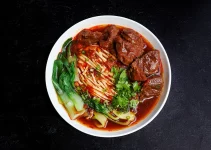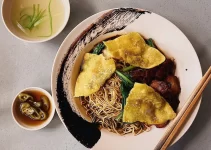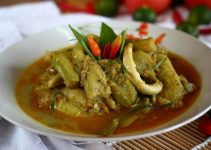Contents
Penne, a popular and versatile pasta shape, is a staple in kitchens around the world. Its ridged surface and tubular structure make it ideal for holding onto sauces and delivering robust flavors in every bite. This article explores the history, culinary uses, and cultural significance of penne, along with tips for cooking and pairing it with various ingredients to create delectable dishes.
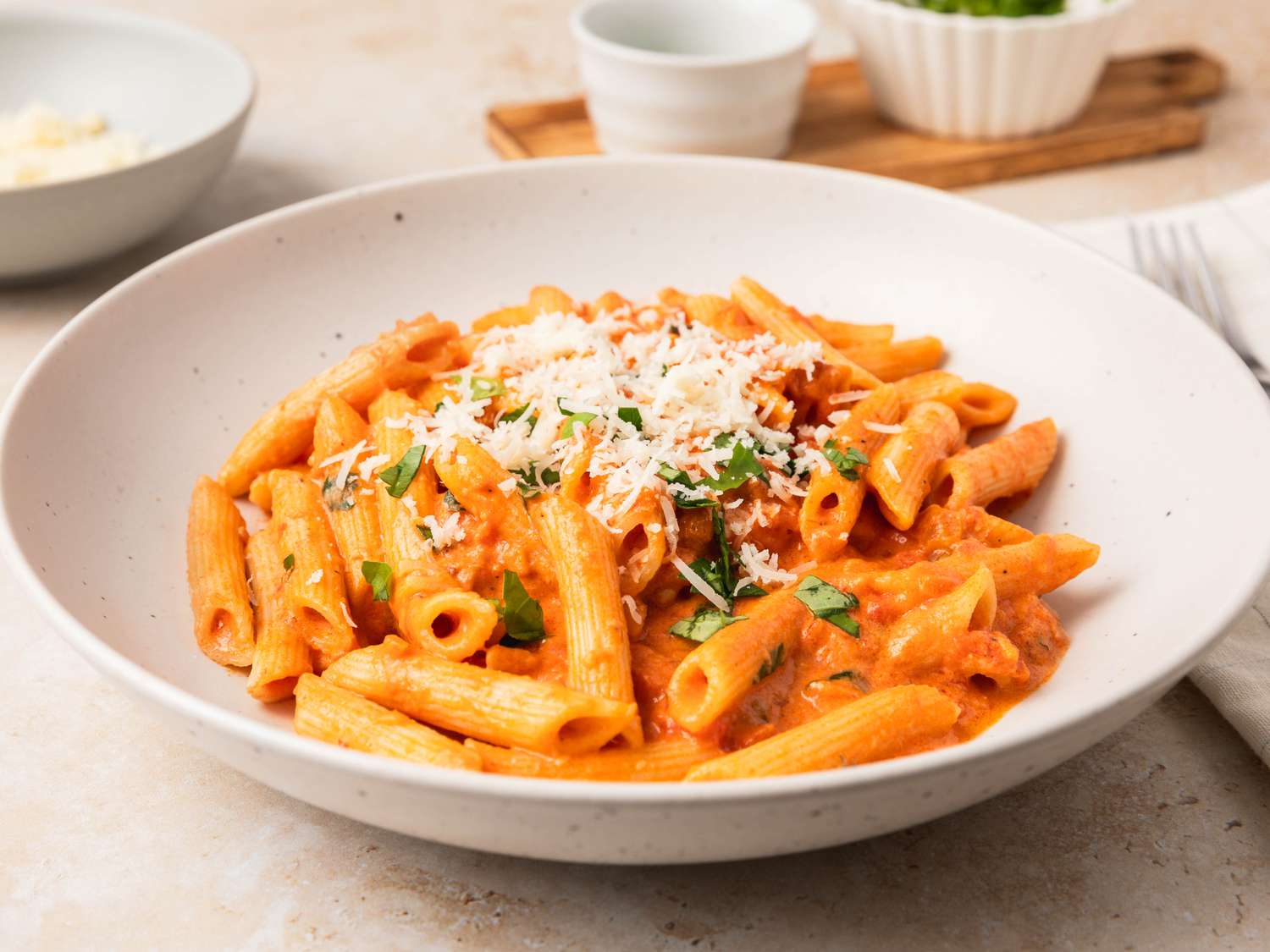
Historical Background
Penne, which means “quills” or “pens” in Italian, is believed to have originated in the Liguria region of Italy. The name refers to the pasta’s distinctive shape, which resembles the nib of a fountain pen. Penne is characterized by its diagonally cut ends, which distinguish it from other tubular pastas like ziti or rigatoni.
The invention of penne is often attributed to Giovanni Battista Capurro, a pasta maker from San Martino d’Albaro (now part of Genoa), who patented a diagonal cutting machine in 1865. This machine allowed for the precise cutting of pasta without crushing it, creating the perfect penne shape.
Characteristics of Penne
Penne comes in two main varieties: penne rigate and penne lisce. Penne rigate has ridges along its sides, which help it hold onto thicker sauces, while penne lisce is smooth and works well with lighter sauces. Both types are widely used in Italian cuisine and beyond.
The pasta is typically made from durum wheat semolina, which gives it a firm texture and helps it maintain its shape during cooking. Penne’s hollow center and ridged surface make it particularly suited for capturing sauces, ensuring each bite is flavorful and satisfying.
Culinary Uses and Pairings
Penne’s versatility allows it to be used in a wide range of dishes, from simple weeknight meals to elaborate gourmet creations. Here are some classic and contemporary ways to enjoy penne:
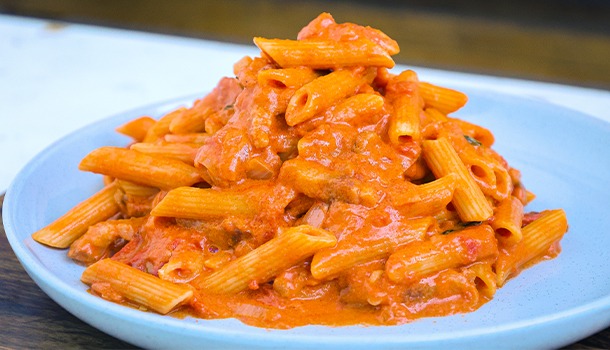
- Penne alla Vodka: A creamy and tangy dish, penne alla vodka features a sauce made from tomatoes, cream, vodka, and a touch of chili flakes for heat. The ridges of the penne hold onto the sauce, making each bite rich and flavorful.
- Penne al Pomodoro: A simple yet delicious dish, penne al pomodoro combines penne with a fresh tomato sauce made from ripe tomatoes, garlic, basil, and olive oil. The smooth texture of the penne lisce works beautifully with the light, aromatic sauce.
- Penne alla Arrabbiata: For those who enjoy a bit of spice, penne alla arrabbiata is the perfect choice. This dish features a fiery tomato sauce made with garlic, red pepper flakes, and parsley, clinging perfectly to the ridges of penne rigate.
- Baked Penne: Also known as penne al forno, this comforting dish involves baking penne with a rich meat sauce, béchamel, and a generous topping of melted cheese. The pasta’s tubular shape allows it to absorb the flavors of the sauce and cheese during baking.
- Penne with Pesto: A lighter, herbaceous option, penne with pesto pairs the pasta with a vibrant pesto sauce made from fresh basil, pine nuts, garlic, Parmesan, and olive oil. The ridges of penne rigate help capture the creamy pesto, ensuring each bite is bursting with flavor.
- Penne Primavera: This dish celebrates fresh, seasonal vegetables by combining penne with a medley of sautéed veggies like bell peppers, zucchini, cherry tomatoes, and asparagus. A light garlic and olive oil sauce ties everything together, making it a healthy and satisfying meal.
Cooking Penne
Cooking penne to perfection requires attention to detail and a few essential techniques. Here are some tips for achieving the best results:
- Use Plenty of Water: Penne needs ample water to cook evenly and prevent sticking. Use a large pot with plenty of boiling water to ensure the pasta has enough space to move around.
- Season the Water: Add a generous amount of salt to the boiling water. This enhances the flavor of the pasta itself, which is crucial for a well-balanced dish.
- Cook Al Dente: Penne should be cooked until it is “al dente,” meaning it is firm to the bite. Overcooked penne can become mushy and lose its ability to hold sauces effectively. Follow the package instructions for cooking times, but start checking a minute or two before the suggested time.
- Save Some Pasta Water: Before draining the pasta, save a cup of the starchy cooking water. This can be added to the sauce to adjust its consistency and help it cling to the pasta.
- Combine Immediately: Toss the cooked penne with the sauce immediately after draining. This allows the pasta to absorb the flavors and ensures each piece is well-coated.
Cultural Significance
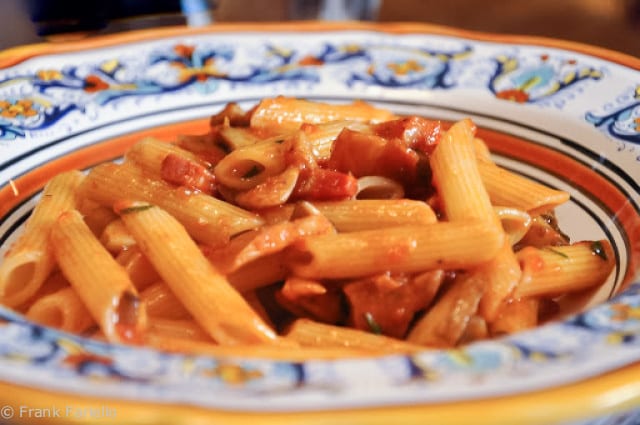
Penne, like many pasta shapes, holds cultural significance in Italy and beyond. In Italy, pasta is more than just food; it is a symbol of tradition, family, and regional pride. Each region has its own preferred pasta shapes and dishes, reflecting local ingredients and culinary practices.
Penne is particularly popular in Liguria and Campania, where it is often featured in traditional dishes that showcase the regions’ flavors and ingredients. In Liguria, penne with pesto is a beloved classic, while in Campania, penne alla vodka has become a modern favorite.
Beyond Italy, penne has become a favorite in many countries, adapted to local tastes and ingredients. In the United States, Italian-American cuisine has embraced penne, incorporating it into classic comfort dishes like baked ziti and pasta salads.
Modern Adaptations
As culinary trends evolve, so too does the use zeusslot of penne. Modern chefs and home cooks are experimenting with new flavors, ingredients, and techniques to create innovative dishes. Some contemporary adaptations include:
- Penne with Truffle Cream Sauce: Elevating the pasta with a luxurious truffle cream sauce, made from truffle oil, cream, and Parmesan. The truffle’s earthy aroma complements the penne’s hearty texture.
- Vegan Penne: Using plant-based ingredients such as cashew cream, nutritional yeast, and roasted vegetables to create a creamy, dairy-free sauce that pairs beautifully with penne.
- Spicy Penne with Chorizo: A modern twist on the classic arrabbiata, this dish incorporates spicy chorizo sausage and smoked paprika to add depth and heat to the tomato sauce.
Nutritional Aspects
Penne, like other pasta, can be a nutritious part of a balanced diet when enjoyed in moderation and paired with healthy ingredients. Durum wheat semolina, the primary ingredient in traditional penne, is a good source of complex carbohydrates, providing sustained energy. Whole wheat penne is also available, offering additional fiber and nutrients.
Pairing penne with vegetable-based sauces, lean proteins, and healthy fats can enhance its nutritional profile. For those with dietary restrictions, gluten-free penne made from rice, quinoa, or chickpea flour provides an alternative that accommodates gluten sensitivities.
Conclusion
Penne’s enduring appeal lies in its versatility, texture, and ability to absorb and hold onto sauces. Whether enjoyed in traditional Italian dishes or modern culinary creations, penne remains a beloved pasta shape that continues to delight and inspire cooks and diners alike. As we explore new ways to prepare and enjoy penne, this classic pasta will undoubtedly remain a staple in kitchens around the world, symbolizing the rich and diverse heritage of Italian cuisine.
Read More Article About “Scone: Scrumptious Delights That Elevate Your Tea Time“

